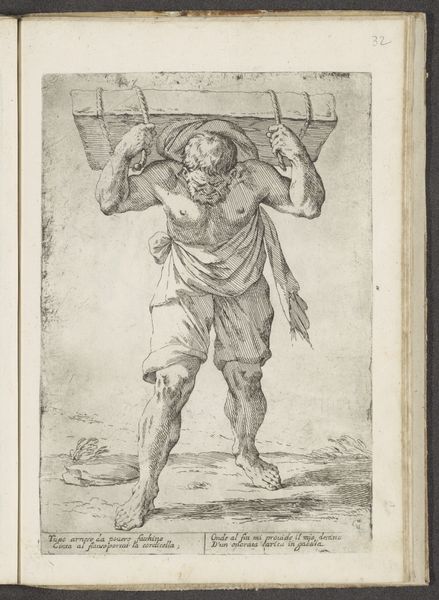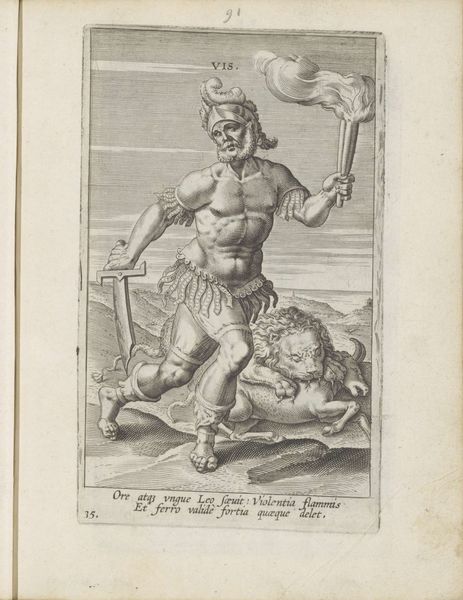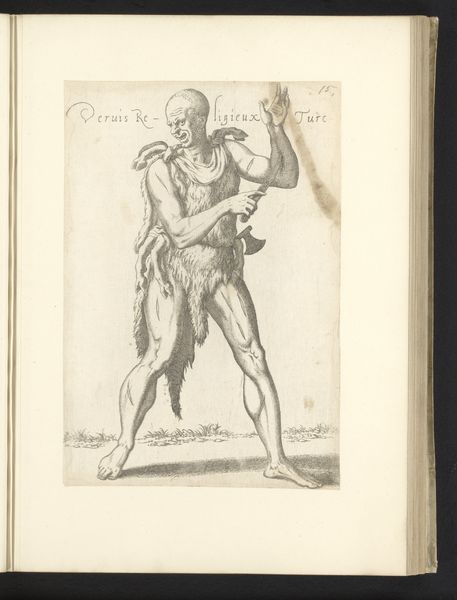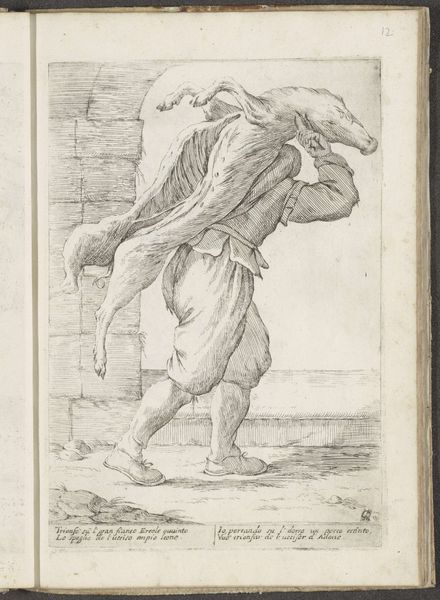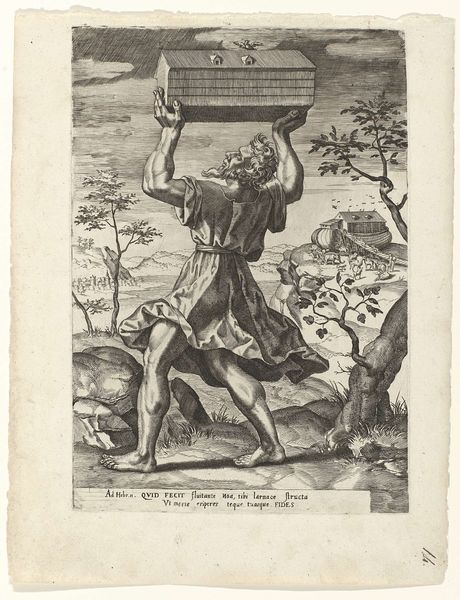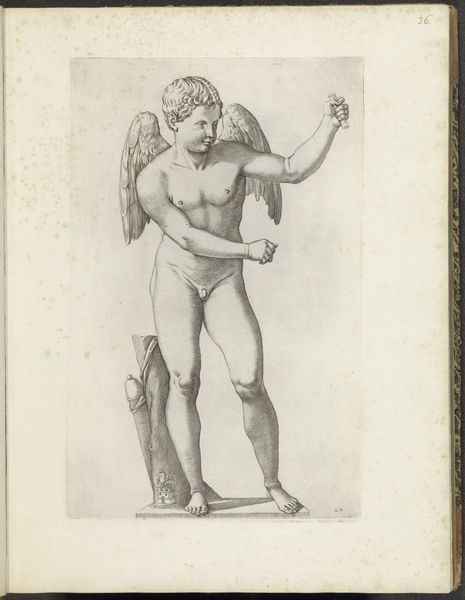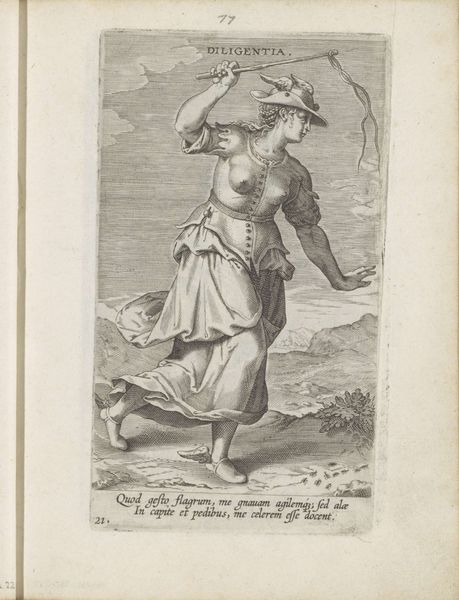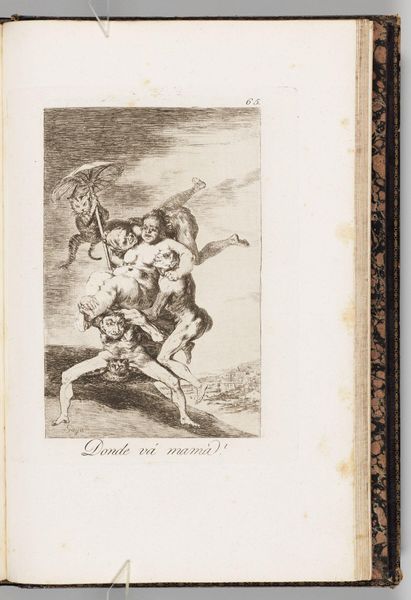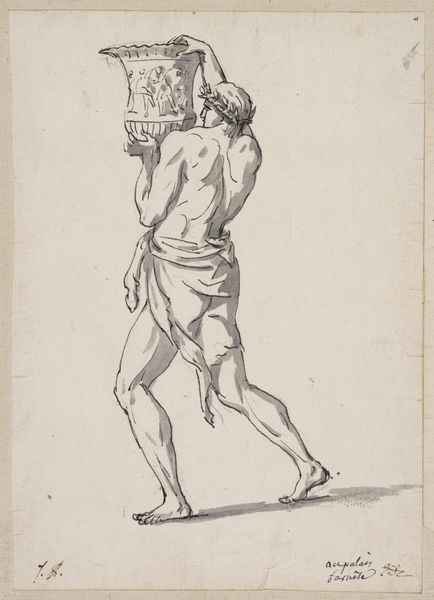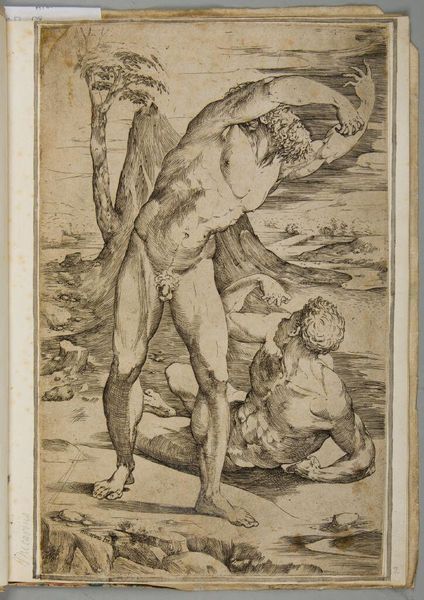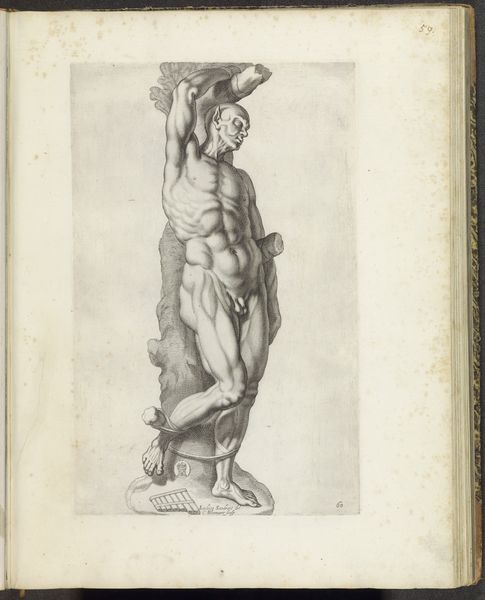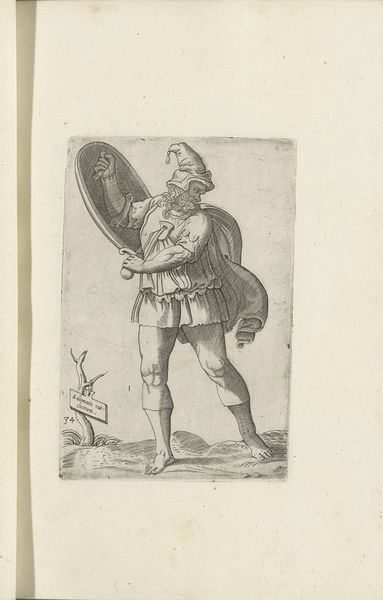
print, engraving
#
allegory
# print
#
mannerism
#
figuration
#
engraving
Dimensions: height 152 mm, width 89 mm
Copyright: Rijks Museum: Open Domain
Curator: I am struck by the intensity of emotion conveyed in this engraving. The contorted body, the pained expression...it's palpable. Editor: Indeed. This print, titled "Gevaar," meaning "Danger," dates back to circa 1585-1590 and is attributed to Philips Galle. It’s currently housed at the Rijksmuseum. Notice the meticulous engraving technique typical of Mannerism. Curator: The use of engraving allows for such fine detail in depicting the strained musculature and the overall sense of entrapment. Is he carrying that ring embedded with swords? What material do you suppose that is? How was such a form made? Editor: It does appear so. The construction would necessitate careful craftsmanship; I wonder about the division of labor required for something like this, the artisans who produced the raw materials. Looking beyond the allegorical figure, you've got consider the means and conditions that made it. Curator: Exactly. The figure, seemingly burdened by this sword-studded wheel, evokes a sense of existential angst and isolation. There's an inscription, "PERICVLVM" above him, driving home this sense of ever present danger. Editor: This goes beyond just the artist and their vision, though; the material object, this print, would have been produced and circulated within specific economic and social structures, affecting its distribution and reception, particularly with its text components. The Latin verses suggest a sophisticated audience, but what was its ultimate usage? Curator: The verses underscore a sense of universal vulnerability. Regardless of the original owner, and speaking from my perspective, I am interested in Galle’s representation of the figure—note the slight turn of the head, his wide stance; he’s presented, simultaneously, as being caught and yet actively bracing himself. Considering the prevalence of religious and political conflict during that time, it speaks to the pressures of existing under those conditions, pressures often differentiated across intersecting identity lines. Editor: That reading holds weight, yes, and yet, considering Galle's commercial printmaking focus, how were labor and economic realities shaping not only this particular imagery but his role in visually mediating broader ideas around the self, the world, and peril? How did distribution influence these meanings, given the scale and scope? Curator: So much is packed into such a tiny area... it speaks volumes about how human anxiety transcends temporal context. Editor: It provides layers to peel back from multiple perspectives; the conditions, as much as content, open this work to interpretations beyond the artist's mind and period, inviting broader thinking.
Comments
No comments
Be the first to comment and join the conversation on the ultimate creative platform.
